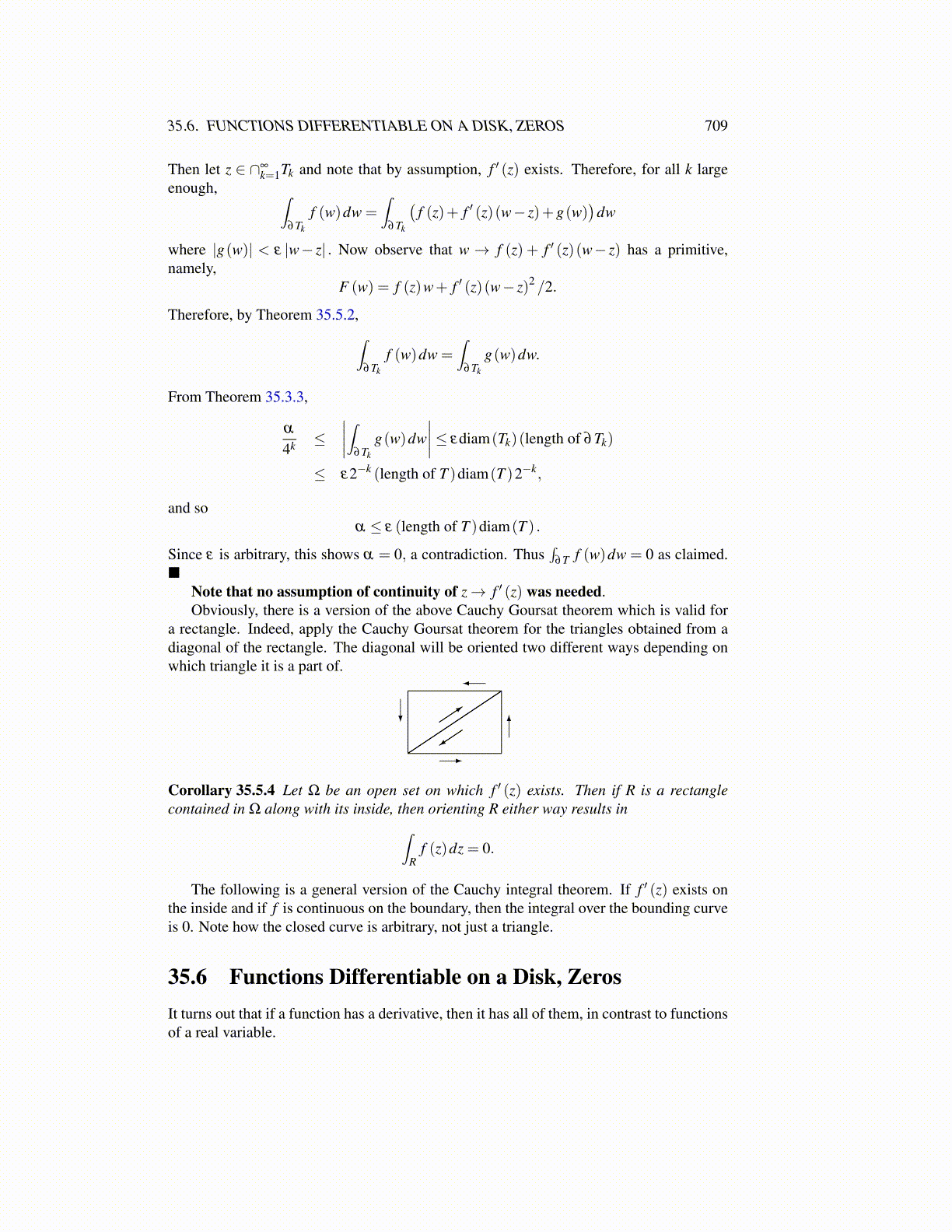
35.6. FUNCTIONS DIFFERENTIABLE ON A DISK, ZEROS 709
Then let z ∈ ∩∞k=1Tk and note that by assumption, f ′ (z) exists. Therefore, for all k large
enough, ∫∂Tk
f (w)dw =∫
∂Tk
(f (z)+ f ′ (z)(w− z)+g(w)
)dw
where |g(w)| < ε |w− z| . Now observe that w → f (z) + f ′ (z)(w− z) has a primitive,namely,
F (w) = f (z)w+ f ′ (z)(w− z)2 /2.
Therefore, by Theorem 35.5.2,∫∂Tk
f (w)dw =∫
∂Tk
g(w)dw.
From Theorem 35.3.3,
α
4k ≤∣∣∣∣∫
∂Tk
g(w)dw∣∣∣∣≤ εdiam(Tk)(length of ∂Tk)
≤ ε2−k (length of T )diam(T )2−k,
and soα ≤ ε (length of T )diam(T ) .
Since ε is arbitrary, this shows α = 0, a contradiction. Thus∫
∂T f (w)dw = 0 as claimed.■
Note that no assumption of continuity of z→ f ′ (z) was needed.Obviously, there is a version of the above Cauchy Goursat theorem which is valid for
a rectangle. Indeed, apply the Cauchy Goursat theorem for the triangles obtained from adiagonal of the rectangle. The diagonal will be oriented two different ways depending onwhich triangle it is a part of.
Corollary 35.5.4 Let Ω be an open set on which f ′ (z) exists. Then if R is a rectanglecontained in Ω along with its inside, then orienting R either way results in∫
Rf (z)dz = 0.
The following is a general version of the Cauchy integral theorem. If f ′ (z) exists onthe inside and if f is continuous on the boundary, then the integral over the bounding curveis 0. Note how the closed curve is arbitrary, not just a triangle.
35.6 Functions Differentiable on a Disk, ZerosIt turns out that if a function has a derivative, then it has all of them, in contrast to functionsof a real variable.